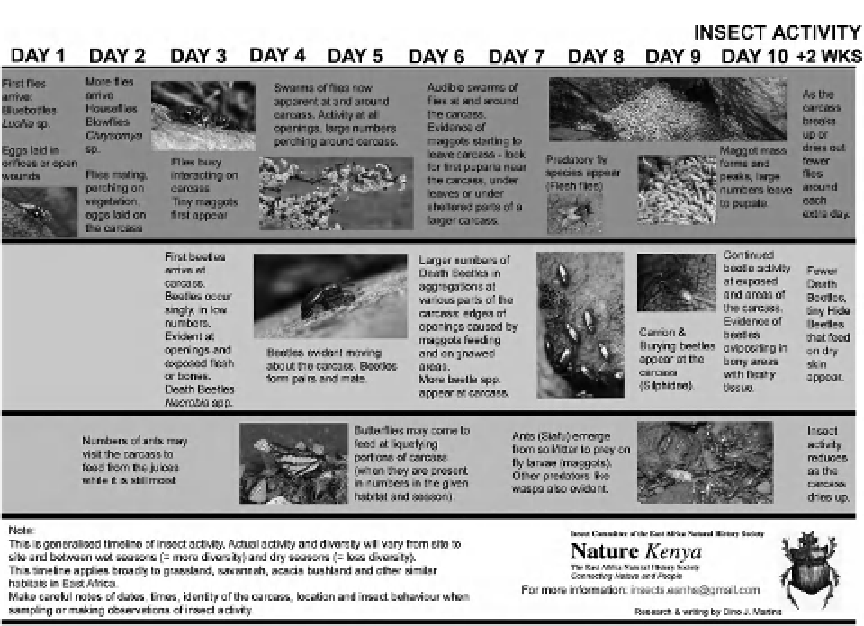Environmental Engineering Reference
In-Depth Information
Figure 3.18
Generalised timeline of insect activity and diversity at mammalian carcasses in Kenya
and use it as a breeding site. They lay eggs that hatch into fl y larvae (i.e., maggots), which are among
the most important decomposers of a carcass. On large carcasses, such as elephants, the maggots
soon form a writhing mass and facilitate the rapid digestion and breakdown of the carcass. They
are also preyed on by birds, mammals like civets and shrews, as well as many other insects such as
carnivorous beetles, wasps and even other maggots, which means there is potential for secondary
exposure to any compounds on the carcass.
Maggots form a large mass that peaks in size at approximately one week to 10 days after the
animal has died. Then a large exodus of maggots occurs as they seek out sheltered areas in surround-
ing litter or soil to pupate. At large carcasses, maggots often pupate under the carcass itself. If you
gently dig in the soil or leaf litter you will often fi nd pupae that are smooth, dark brown oval/oblong
in shape. These can be collected and kept in containers till they hatch out to see what fl ies were using
the carcass. Often maggots will pack themselves together lengthwise so only the tips of their bodies
are visible. They facilitate one another by feeding 'en masse' and secreting digestive juices. Their
activity also raises the temperature of the carcass signifi cantly (by up to 10 ºC higher than the sur-
rounding ambient environmental temperature).
Soon, other species of fl ies arrive at the carcass, including copper-tailed blowfl ies (Calliphoridae),
housefl ies (Muscidae), and eventually fl esh fl ies (Sarcophagidae). These species are soon followed
by beetles. The common carcass-visiting beetles in Kenya are death beetles (
Necrobia
), which also
breed on the carcass. Other beetle species (e.g., carrion beetles), arrive and feed in low numbers. The
maggots and death beetles are obligate carcass feeders (i.e., they require carrion for their life-cycle
and development). Many opportunistic species also visit carcasses, including numerous predators
such as wasps and ants.




























Search WWH ::

Custom Search